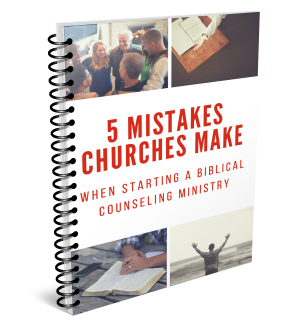It is by trial and error, by frustration and dryness, that I have learned that I cannot order up a praying heart. I have had to learn how to get myself in the frame of mind and condition to pray.
This article by staff counselor Donna Hart, PhD, appeared first here at her personal blog and is used by permission.
It is important to understand how to start yourself off. And it is in this place that is crucial that you know yourself.
What I have found helpful for me is to start out reading something devotional. I don’t mean something sentimental, but something with a true element of worship, something that warms the spirit. This is for the purpose of flushing out any coldness that has developed in the heart.
It is to kindle a flame in your spirit, warming yourself up, and giving yourself a start. This warming of your spirit will stimulate you, and enable you to be in a condition to pray more freely.
Once you are warmed up to prayer it is time to enter into the living Word and seek its transformative power. To experience more of the power of the Word you move into it on four levels: reading, meditating, praying, and wordless contemplation. As you practice these moves as active prayer, you will find that you are living the Scriptures, and praying them from the heart out (Joshua 1:8-9).
1. Prepare
Prepare: Prepare by choosing a portion of Scripture.
It can be a narrative story from the gospels or four to five verses of a psalm. Start by getting comfortable in a chair, sitting so there is a straight line from the back of the head to the bottom of the spine. Keeping your hands open and resting in your lap.
Focus your eyes forward on something in particular for two or three minutes calming your mind of fears and freeing it of the task list. Be conscious of bodily tension and try to relax and let go of that tension.
Keep a quiet and intentional breathing going for a few minutes, or longer as time allows.
2. Read
Read: Read the passage slowly and carefully, maybe out loud if that helps you to keep focused.
Explore the “who, what, when, why, where, and how” of the passage. This is reading actively considering all angles of the passage.
Do a mental scanning of the passage, intending to bring about an overview of the scene, which will help as you move more deeply into prayer. To use the mind is to pray.
3. Meditate
Meditate: While the reading of the Scripture primarily uses your critical-thinking function, meditating upon Scripture uses your feeling, sensing, and imagining functions.
In this third move of meditating, you will want to enter into the passage as if you were there, experiencing the moment for yourself.
Let your mind wander over what you have read, and notice what “sticks out.” It may be the size and intensity of the crowd, the anger of the scribes, the feeling of the paralysis, the love of Jesus, or some other detail. Allow yourself to feel the scene, to be there. Look around to see how others are reacting, observe Jesus and see what he does or says, how he looks at you. Imagine what you might say to Jesus.
This is active imagination at work, and in doing this you may find that something quite specific to your life emerges out of the Word. Since the living Word is truth, this is a chance for your specific experiences of life to be touched by truth.
4. Pray
Pray: While all that has transpired up to now is prayer, this level is a way of putting thoughts and feelings into a specific intention directed toward God.
In this move, you will form the results of thinking and feeling into an intention of the heart. Out of the heart comes a prayer that emerges from reading and meditating.
Whatever emerged from the meditation, even if it is not emotionally charged or seemingly profound, it is something that emerged from the needs and concerns in your heart.
Whatever it was, try to see specifically what in your life relates to that. Offer this to God in prayer, asking for direction or guidance, giving thanks or expressing penitence.
5. Contemplation
Contemplation: The last move is contemplation which is simply being in the presence of God in silence and peace.
You are actively watchful, expectant, and open, yet not attempting to make anything happen. This is where you must be very vulnerable, trusting that God’s will shall be done in you, and it shall be far greater than anything you could hope to accomplish by your prayerful efforts.
Your goal is to be still before God. You have thought, imagined, and prayed about the passage of Scripture, you have allowed yourself to be touched by the living Word.
The effect of that touch is what you take into contemplation. You are giving up your own control and allowing God to work on you. You will be transformed by God’s grace according to God’s will. Sit in peace, not expecting anything, not seeking anything. Close your time with a simple word of praise and thankfulness.
To pray the Scriptures is to know the Scriptures in the heart and as an active force in your life. It is being touched and transformed by the living Word.
May the Word be an active force in your heart and mind enabling you more and more to have the mind of Christ taking every thought captive to him, (2 Corinthians 10:5).












